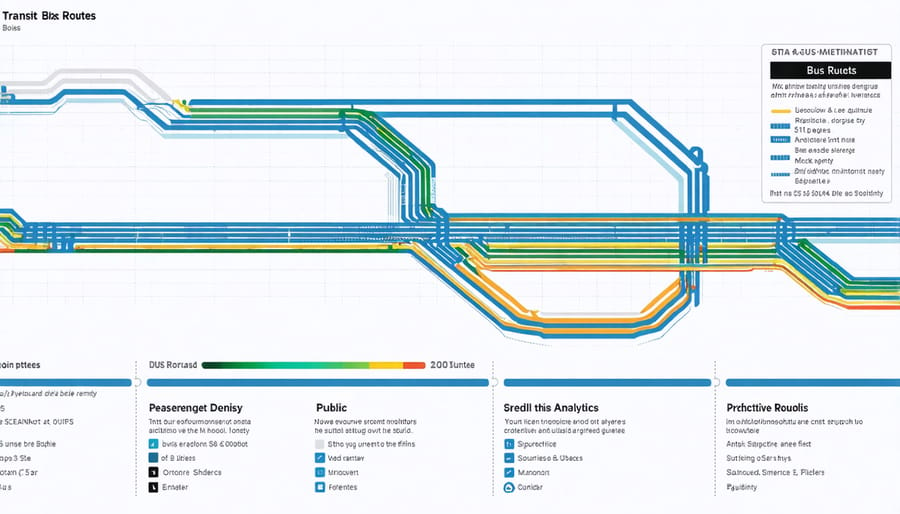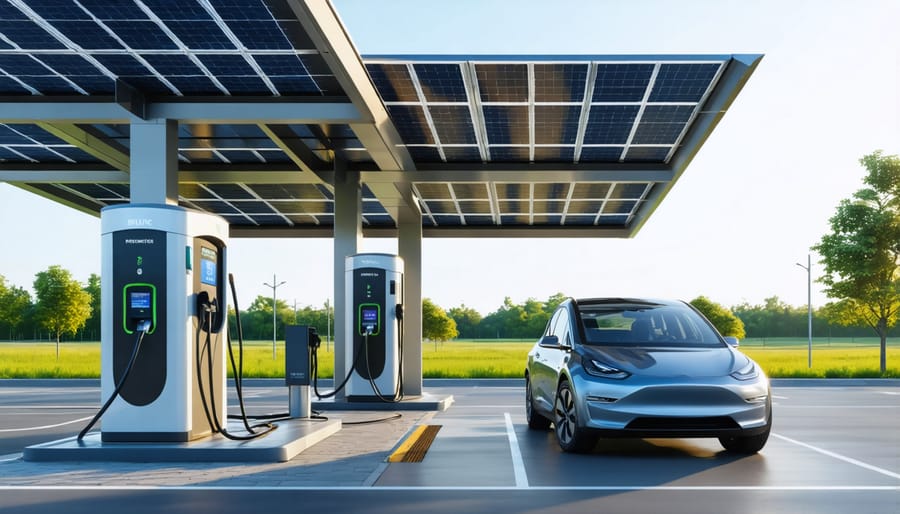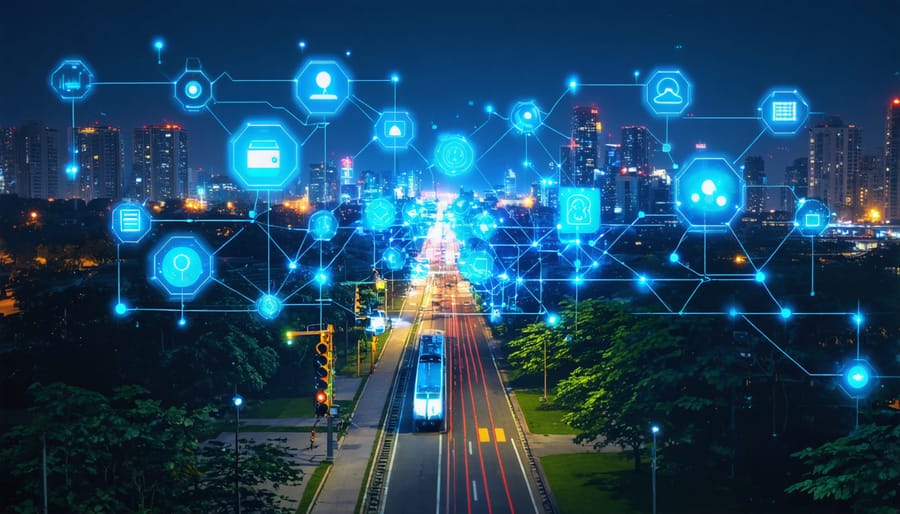Smart cities are rapidly evolving beyond theoretical concepts into tangible realities, transforming urban landscapes through data-driven innovation and intelligent infrastructure. As metropolitan areas worldwide face unprecedented challenges in population growth, resource management, and environmental sustainability, smart solutions have emerged as critical tools for building resilient, efficient, and livable urban environments.
The integration of Internet of Things (IoT) sensors, artificial intelligence, and advanced analytics is revolutionizing how cities operate, from traffic management and public transportation to waste collection and energy distribution. These technologies enable real-time monitoring and adaptive responses to urban challenges, creating a dynamic ecosystem that responds to citizens’ needs while optimizing resource utilization.
Leading cities like Singapore, Barcelona, and Copenhagen demonstrate how smart solutions can significantly improve urban mobility, reduce carbon emissions, and enhance quality of life. Their successes show that effective smart city implementation requires not just cutting-edge technology, but also thoughtful planning, strong governance frameworks, and active citizen engagement.
As we stand at the intersection of urbanization and digital transformation, the adoption of smart solutions has become not just an option, but a necessity for creating sustainable, efficient cities that serve their inhabitants while preparing for future challenges.
The Building Blocks of Smart Urban Mobility
Connected Infrastructure Networks
Modern smart city infrastructure relies heavily on interconnected networks that form the backbone of urban intelligence. IoT sensors, strategically placed throughout the city, collect real-time data on traffic flow, air quality, and infrastructure conditions. These sensors communicate through advanced 5G networks, enabling unprecedented speed and reliability in data transmission.
Smart traffic management systems integrate this sensor data with artificial intelligence to optimize traffic flow. Adaptive traffic signals adjust their timing based on real-time traffic conditions, reducing congestion by up to 25% in pilot cities. The implementation of vehicle-to-infrastructure (V2I) communication allows for dynamic routing and predictive maintenance of road infrastructure.
Connected infrastructure networks also enable intelligent public transportation systems. Real-time tracking and capacity monitoring help optimize bus and train schedules, while smart parking solutions guide drivers directly to available spaces, reducing urban congestion and emissions.
These systems are particularly effective when integrated with emergency response protocols. During incidents, the network can automatically adjust traffic patterns, coordinate emergency vehicle routes, and communicate vital information to first responders. This level of connectivity has demonstrated significant improvements in emergency response times, with some cities reporting reductions of up to 20-30% in critical situation response periods.

Data Integration Platforms
In modern smart cities, data integration platforms serve as the central nervous system, connecting disparate systems and enabling informed decision-making. These platforms consolidate information from various urban sensors, IoT devices, and municipal databases into a unified ecosystem, creating a comprehensive view of city operations. The foundation of these systems relies heavily on robust digital infrastructure that can handle massive data volumes while ensuring security and accessibility.
Real-time analytics capabilities within these platforms enable city managers to monitor traffic patterns, energy consumption, waste management, and emergency services simultaneously. Advanced machine learning algorithms process this data to identify patterns, predict maintenance needs, and optimize resource allocation. Cities like Singapore and Barcelona have demonstrated the effectiveness of such integrated platforms, achieving significant improvements in operational efficiency and service delivery.
The key to successful implementation lies in selecting platforms that offer scalability, interoperability, and robust security features. These systems must support various data formats and protocols while maintaining compliance with privacy regulations. Additionally, they should provide intuitive dashboards and reporting tools that enable stakeholders to make data-driven decisions quickly and effectively.
Intelligent Transportation Systems in Action
Adaptive Traffic Management
Cities worldwide are revolutionizing traffic management through AI-powered systems, demonstrating remarkable improvements in urban mobility. In Stockholm, Sweden, the implementation of an adaptive traffic control system has reduced average travel times by 23% and cut emissions by 18% since its deployment in 2020. The system uses machine learning algorithms to analyze real-time data from traffic cameras, sensors, and connected vehicles, adjusting signal timing patterns dynamically.
Singapore’s Smart Mobility 2030 initiative showcases another successful implementation, where AI-driven traffic lights respond to changing traffic conditions within milliseconds. The system has achieved a 40% reduction in wait times at major intersections and improved emergency vehicle response times by 35%. This intelligent network processes data from over 1,000 traffic cameras and 50,000 sensors throughout the city.
In Denver, Colorado, the adaptive traffic management system has proven particularly effective during major events and peak hours. The AI system predicts traffic patterns based on historical data and real-time conditions, automatically adjusting signal timing to prevent congestion. Results show a 15% decrease in travel time and a 23% reduction in stops at intersections.
These implementations demonstrate that adaptive traffic management systems not only improve traffic flow but also contribute to reduced emissions and enhanced public safety. Key success factors include comprehensive sensor networks, robust data processing capabilities, and integration with existing infrastructure.
Smart Public Transit Solutions
Modern public transit systems have evolved significantly with the integration of smart technologies, transforming traditional fixed-route services into dynamic, data-driven networks. Real-time tracking systems, powered by GPS and IoT sensors, provide accurate vehicle locations and arrival predictions, enabling passengers to make informed travel decisions through mobile applications.
Dynamic routing algorithms analyze passenger demand patterns, traffic conditions, and historical data to optimize bus and train schedules. This adaptive approach reduces wait times and maximizes vehicle capacity utilization, particularly during peak hours. Cities implementing these systems have reported up to 30% improvement in operational efficiency and passenger satisfaction.
Advanced fare collection systems using contactless payments and smart cards streamline the boarding process while generating valuable ridership data. This information helps transit authorities identify popular routes, adjust service frequency, and plan infrastructure improvements based on actual usage patterns.
Predictive maintenance systems monitor vehicle performance metrics in real-time, enabling proactive maintenance scheduling and reducing service disruptions. Combined with AI-powered traffic signal prioritization, these systems ensure smoother flow of public transit vehicles through congested urban corridors.
Notable implementations include Singapore’s Next Generation Electronic Road Pricing system and London’s integrated transit management platform, which demonstrate how smart transit solutions can accommodate growing urban populations while reducing operational costs and environmental impact. These systems serve as blueprints for cities worldwide seeking to modernize their public transportation networks.

Last-Mile Connectivity Innovation
Last-mile connectivity has emerged as a critical focus area in smart city development, with innovative micro-mobility solutions bridging the gap between major transit hubs and final destinations. Cities worldwide are implementing integrated systems that combine traditional infrastructure with modern mobility options, creating seamless transportation networks that serve diverse urban populations.
Electric scooters, bike-sharing programs, and autonomous shuttles are being strategically deployed at transit nodes, offering flexible, environmentally friendly alternatives for short-distance travel. These solutions are supported by smart infrastructure elements, including dedicated lanes, charging stations, and IoT-enabled parking facilities that optimize space utilization and improve user experience.
Real-world implementations demonstrate the effectiveness of this approach. Barcelona’s successful integration of micro-mobility hubs with its metro system has reduced private vehicle usage by 23% in targeted areas. Similarly, Singapore’s comprehensive last-mile framework incorporates covered walkways, cycling paths, and autonomous vehicles, achieving a 30% increase in public transport ridership.
The key to successful implementation lies in the seamless integration of physical infrastructure with digital systems. Smart sensors monitor usage patterns, while mobile applications provide real-time availability and routing information. Construction professionals are increasingly incorporating these considerations into initial project planning, ensuring that new developments support multi-modal transportation networks from the ground up.
To maximize effectiveness, cities must prioritize infrastructure adaptability and ensure compatibility with existing transportation systems while maintaining safety standards and accessibility requirements.
Sustainable Integration Strategies
Green Transportation Infrastructure
Modern cities are increasingly adopting sustainable transportation infrastructure to reduce emissions and enhance urban mobility. Electric vehicle (EV) charging networks form the backbone of this transformation, with smart charging stations that optimize power distribution and reduce grid strain during peak hours. Cities like Amsterdam and Copenhagen demonstrate how integrated cycling infrastructure, including sensor-equipped bike lanes and automated bicycle parking facilities, can significantly reduce vehicular traffic.
Smart traffic management systems utilizing AI and IoT sensors help optimize traffic flow and reduce congestion. These systems adapt in real-time to changing traffic patterns, automatically adjusting signal timing and providing dynamic routing options. Several metropolitan areas have reported up to 25% reduction in travel times after implementing these solutions.
Connected public transit systems represent another crucial component, featuring electric buses with regenerative braking technology and smart payment systems. Real-time tracking and predictive maintenance ensure optimal fleet management while improving service reliability. Cities like Singapore have successfully implemented autonomous shuttle services in designated zones, paving the way for future expansion.
Green infrastructure integration includes permeable pavements that manage stormwater runoff, solar-powered street lighting, and urban forestry along transit corridors. These elements not only support environmental sustainability but also enhance the resilience of transportation networks during extreme weather events. The implementation of smart parking solutions, utilizing sensors and mobile applications, has reduced parking-related traffic by up to 30% in pilot cities while optimizing space utilization.

Energy-Efficient Systems
Energy-efficient systems form the backbone of sustainable urban development, integrating advanced power management solutions with renewable energy sources. At the heart of this transformation lies smart grid infrastructure, which enables dynamic load balancing and real-time energy distribution optimization.
Recent implementations in Copenhagen and Singapore demonstrate how intelligent building management systems can reduce energy consumption by 25-40% through automated controls and predictive analytics. These systems leverage IoT sensors and artificial intelligence to optimize HVAC operations, lighting, and power distribution based on occupancy patterns and environmental conditions.
Renewable energy integration has become increasingly sophisticated, with solar panels and wind turbines now incorporating smart inverters that communicate directly with the power grid. This bi-directional communication enables better demand response management and enhanced grid stability. For instance, Barcelona’s smart energy initiative has successfully integrated over 500 buildings into a renewable energy network, reducing carbon emissions by 30% while maintaining reliable power supply.
Advanced energy storage solutions, including grid-scale batteries and thermal storage systems, complement these initiatives by providing load-shifting capabilities and backup power. These systems ensure continuous operation during peak demand periods while maximizing the utilization of renewable energy sources, creating a more resilient and sustainable urban power infrastructure.
Implementation Challenges and Solutions
The implementation of smart city solutions presents several significant challenges that require careful consideration and strategic planning. Infrastructure integration remains a primary hurdle, as existing systems often operate in silos and require substantial retrofitting to accommodate new technologies. Cities frequently encounter difficulties in coordinating multiple stakeholders, including utility providers, transportation authorities, and private sector partners.
Data management and security concerns pose another crucial challenge. The vast amount of data generated by smart city systems requires robust infrastructure for collection, storage, and analysis, while maintaining stringent cybersecurity protocols to protect sensitive information. Privacy considerations must be balanced with the need for data-driven decision-making.
Financial constraints often impede large-scale implementation, particularly in developing urban areas. However, innovative funding models, such as public-private partnerships (PPPs) and performance-based contracts, have emerged as viable solutions. These approaches help distribute risks and costs while ensuring sustainable project delivery.
Technical compatibility issues can be addressed through the adoption of open standards and scalable architectures. Many cities have successfully implemented pilot programs before full-scale deployment, allowing for testing and refinement of solutions while minimizing risks. This approach aligns with urban resilience planning principles and ensures long-term sustainability.
Workforce development presents another challenge, as smart city technologies require specialized skills. Successful implementations have included comprehensive training programs and partnerships with educational institutions to build local capacity. Change management strategies, including stakeholder engagement and clear communication plans, have proven essential in overcoming resistance to new technologies and ensuring widespread adoption.
As we look to the future of urban mobility, the integration of smart solutions in our cities represents not just an evolution but a necessary transformation in how we approach urban transportation challenges. The successful implementation of smart mobility solutions across various global cities has demonstrated significant improvements in traffic flow, reduced emissions, and enhanced quality of life for residents.
The key takeaways from successful smart city initiatives emphasize the importance of integrated systems, data-driven decision making, and collaborative approaches between public and private sectors. Cities that have embraced smart mobility solutions have seen up to 30% reduction in traffic congestion and a 25% decrease in carbon emissions from transportation sectors.
Looking ahead, the trajectory of smart urban mobility points toward even more sophisticated integration of AI and IoT technologies, with predictive analytics playing a crucial role in traffic management and infrastructure planning. The emergence of autonomous vehicles and mobility-as-a-service platforms will further reshape our urban transportation landscape.
However, the success of future implementations will depend heavily on robust infrastructure investment, standardized data protocols, and careful consideration of cybersecurity measures. Construction professionals and urban planners must prioritize adaptable infrastructure designs that can accommodate emerging technologies while ensuring sustainability and accessibility for all citizens.
As we move forward, the focus must remain on creating resilient, sustainable, and inclusive mobility solutions that serve the diverse needs of our growing urban populations while supporting environmental goals and economic development.

